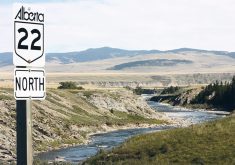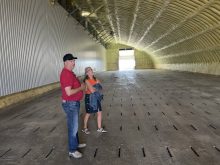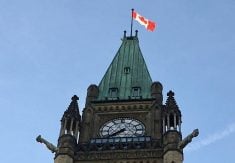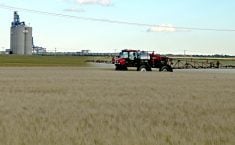At our country home near Perth, Ontario, I marvel at the surrounding forest and enjoy gentle, unhurried walks through the meadow that slopes away from the house.
Sometimes, if I’m still, I can glimpse the daily lives of denizens of these habitats. I’ll see deer, elegant in their passing, or a field mouse skittering by. I’ll watch a playful dragonfly hover above the small pond at the bottom of the hill.![]()
Read Also
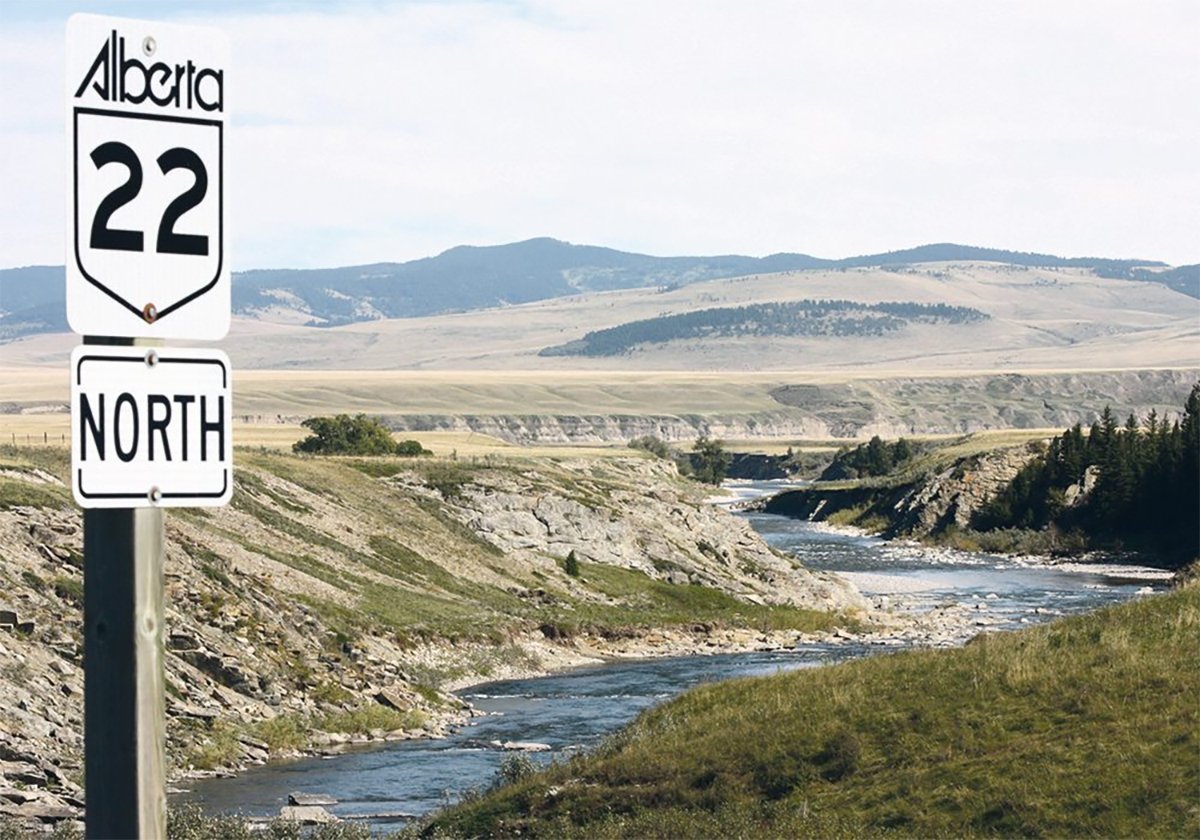
New coal mine proposal met with old concerns
A smaller version of the previously rejected Grassy Mountain coal mine project in Crowsnest Pass is back on the table, and the Livingstone Landowners Group continues to voice concerns about the environmental risks.
I’m jealously protective of all that exists beyond my front door, but I won’t be here forever. I want to ensure that this land is unaltered and available for others to enjoy in the future.
So what can I do?
If I had children, I could pass this piece of paradise on to them. How else can I preserve my land? One way is through a national program managed by Environment Canada. It allows Canadians who own environmentally sensitive land to protect nature and leave a legacy for future generations.
Created in 1995, the Ecological Gifts Program preserves our environmental heritage and offers significant tax incentives to landowners who donate property. While I’m alive, I can receive a tax receipt for my donation that can be applied against 100 percent of my net annual income. And I can continue to live on the land if I so choose.
“As of today, a total of 679 ecological gifts have been made across the country, protecting 117,236 hectares (289,696 acres) of land valued at close to $420 million,” said Dawn Laing, habitat biologist with the Ecological Gifts Program.
“In 2000, the improved tax incentives made the program more popular, and after further tax changes in 2006, the program again increased in popularity. The rate of ‘eco-gifting’ has increased from 51 gifts certified in 2006 to 72 gifts certified in 2007.”
Nearly half these donations contain areas of national, provincial or regional importance, and many include rare or threatened habitats that are home to species at risk. Some of these donations have been large, and have become well-known conservation areas or preserves.
Individuals with special ties to their land have found ways to preserve their properties even before Environment Canada initiated the Ecological Gifts Program. This is how the Ann and Sandy Cross Conservation, a region of rolling foothills southwest of Calgary, came into being.
The Crosses donated nearly 2,000 acres of their land to the province of Alberta in 1987. At that time, it was the largest private land donation in Canadian history, overseen by the Nature Conservancy of Canada. In 1996, the Cross family donated an additional 2,800 acres, for a total of 4,800 acres. At the same time, the Sandy Cross Conservation Foundation was created to manage the preserve, and another $2 million was raised for the management fund. Sandy Cross died in 2003 at age 89.
Another large nature preserve was established in Saskatchewan, thanks to Peter Butala and his wife, Sharon Butala, an award-winning author and an Officer of the Order of Canada. They donated a portion of their expansive ranch to the Nature Conservancy of Canada in 1996.
The preserve, now known as The Old Man on His Back Prairie and Heritage Conservation Area, at more than 13,000 acres, is one of the largest tracts of pristine native prairie grass in Canada. The Butalas donated 1,038 acres, sold an additional 1,436 acres, and turned over nearly 11,000 acres of leased Crown land to the Nature Conservancy of Canada.
“Saskatchewan may not be as striking as the Rockies or the Great Lakes, but it does have its own beauty and it catches you,” said Peter.
In a 1993 interview, Butala had noted that most of the land in the southwest corner of the province is unsuited to farming.
“It was plowed up when wheat was worth a lot, and any crop you could get was a dollar in the bank,” he said.
“We have to learn what the land needs and give it just that. Farming this land responsibly sometimes means leaving it alone.”
This environmental champion died in 2007. The property is now co-managed through a long-term agreement between Saskatchewan Agriculture, Saskatchewan Environment and the Nature Conservancy of Canada.
As farming has expanded in this part of Saskatchewan, many plant species have become endangered. Researchers are studying more than 150 varieties of wild grasses that grow on the preserve.
Also, as part of the Butalas’ vision, 50 wild bison have been moved from Elk Island National Park in Alberta and released to roam Old Man and His Back.
Another sensitive tract of Saskatchewan land, donated by Henry and Cheryl Kloppenburg, was declared a provincial wildlife refuge and placed in the Fish and Wildlife Development Fund Inventory.
“We are donating this land to the province as a wildlife refuge so that it remains forever as a natural area and home to the native prairie plants and animals, in honour of our ancestors who settled this great prairie province,” said Henry Kloppenburg, as the land changed hands in 1996.
His father, grandfather and great-uncle immigrated to Canada from Germany in 1928 and purchased the property in 1945. The 159-acre preserve is now known as the Kloppenburg Wildlife Refuge.
Because southern Saskatchewan has been exposed to intense agricultural development, the Prairie landscape is among the most altered in the world. The Kloppenburg Wildlife Refuge, once pastureland, has never been broken by a plow or tractor. It contains hundreds of native plant and animal species.
Few of us own huge tracts of land, but many of us do own ecologically significant parcels. The Ecological Gifts Program is geared to provide an incentive to those whose smaller properties are worth conserving. The Nature Conservancy of Canada holds upwards of 260 ecological gifts, including many large estates, said Laing.
In addition to federal, provincial, territorial and municipal governments, there are more than 160 Canadian charities eligible to receive ecological gifts. One of the newest is the Mississippi Madawaska Land Trust Conservancy, formed by Lanark County, Ont., landowners in 2004.
Ted Mosquin, president of the land trust conservancy, said it was created as a way of protecting ecologically sensitive properties.
Mosquin said he’s seen increasing interest in land donations during the organization’s short tenure.
“In Ontario, about 50,000 properties have been donated (to various other charities). We look for quality properties that will benefit us and the public interest.”
If a charity such as the Mississippi Madawaska Land Trust Conservancy accepts a property, there’s a good chance it would also be accepted by the Ecological Gifts Program, Mosquin added.
Who is donating land, and why? The motivations “are as varied as the types of land that exist,” Laing said.
“On average, most people who are interested in donating ecological gifts have strong connections with their properties and have a desire to see them protected into the future. They wish to have the peace of mind that their property will remain as is for future generations and won’t be subdivided.”
She said the tax benefits might be a secondary factor.
“But it is too early to tell if the elimination of tax on capital gains for ecological gifts in 2006 will become a more significant reason for donating in the future.”
Potential donors should know that no piece of land is too small to be donated, but it does have to meet certain criteria to be eligible for the Ecological Gifts Program.
“The most significant factor in considering a potential donation is how the property contributes to the natural heritage and biodiversity of Canada,” Laing said.
“Each proposed donation is evaluated on a case-by-case basis, depending on the natural features present [and] the role the property plays on the landscape in terms of connectivity to other protected areas.”
A wide range of lands, including forests, grasslands, wetlands, shorelines and restoration lands, have been protected under the program. If a property contains features that have been conserved in their natural state, or there is good potential to rehabilitate such features, it may qualify as an ecological gift, Laing said.
She has some advice for land-owners considering the donation process.
“Get independent financial and legal advice to ensure the implications of the donation are fully understood. Additionally, making a donation is a significant undertaking and should be discussed with all those involved or affected, for example family members.”
Although my property is important and valuable to me, I don’t yet know whether it qualifies for the Ecological Gifts Program. If it does, it’s a win-win situation for all parties involved. If I donate, I get a monetary reward up front, as well as peace of mind knowing I’ve made an ecologically sound decision that will benefit future generations.




